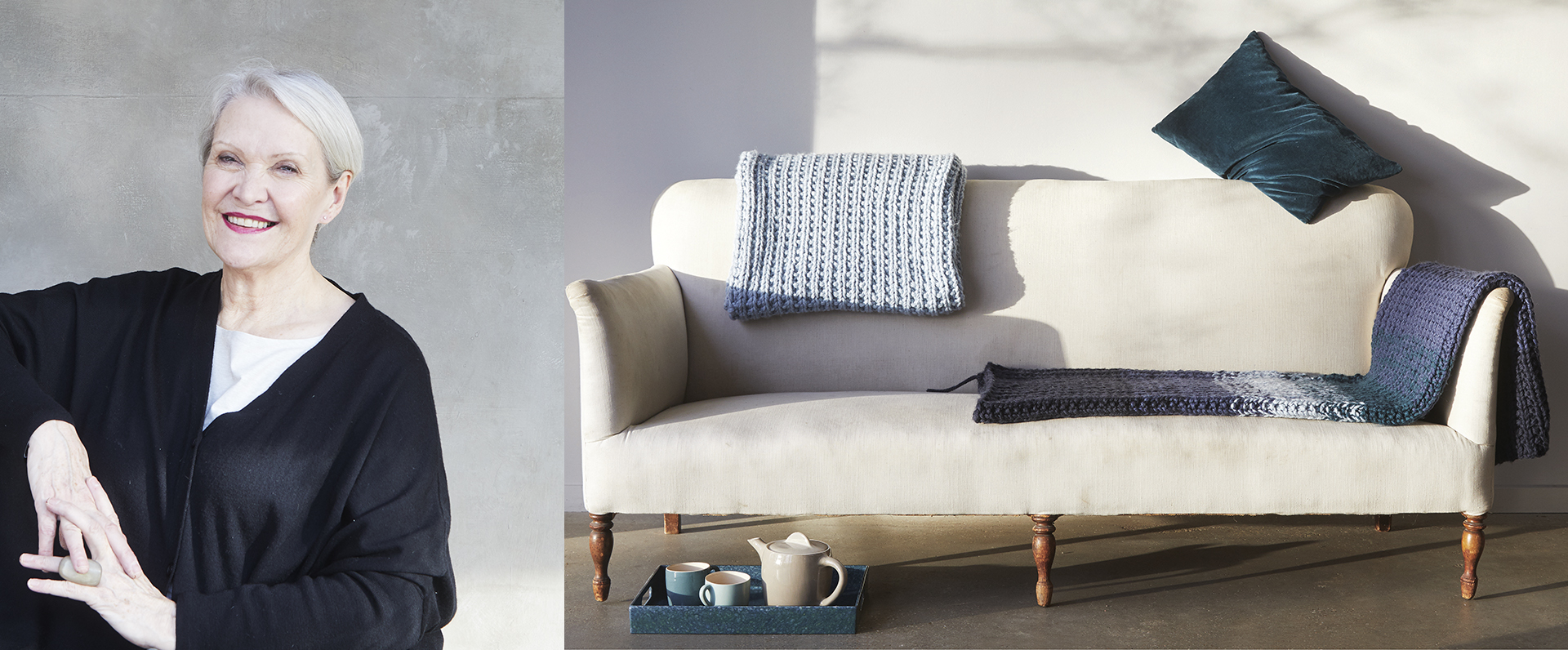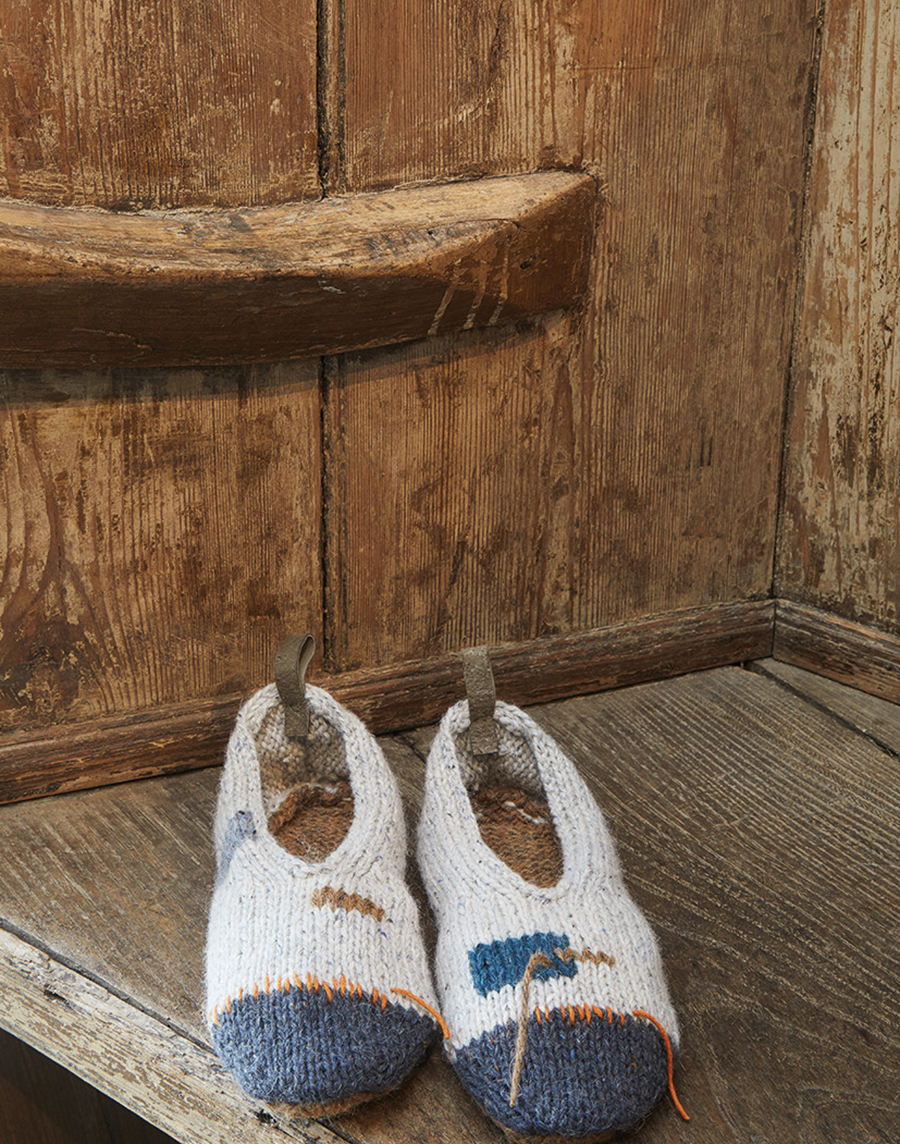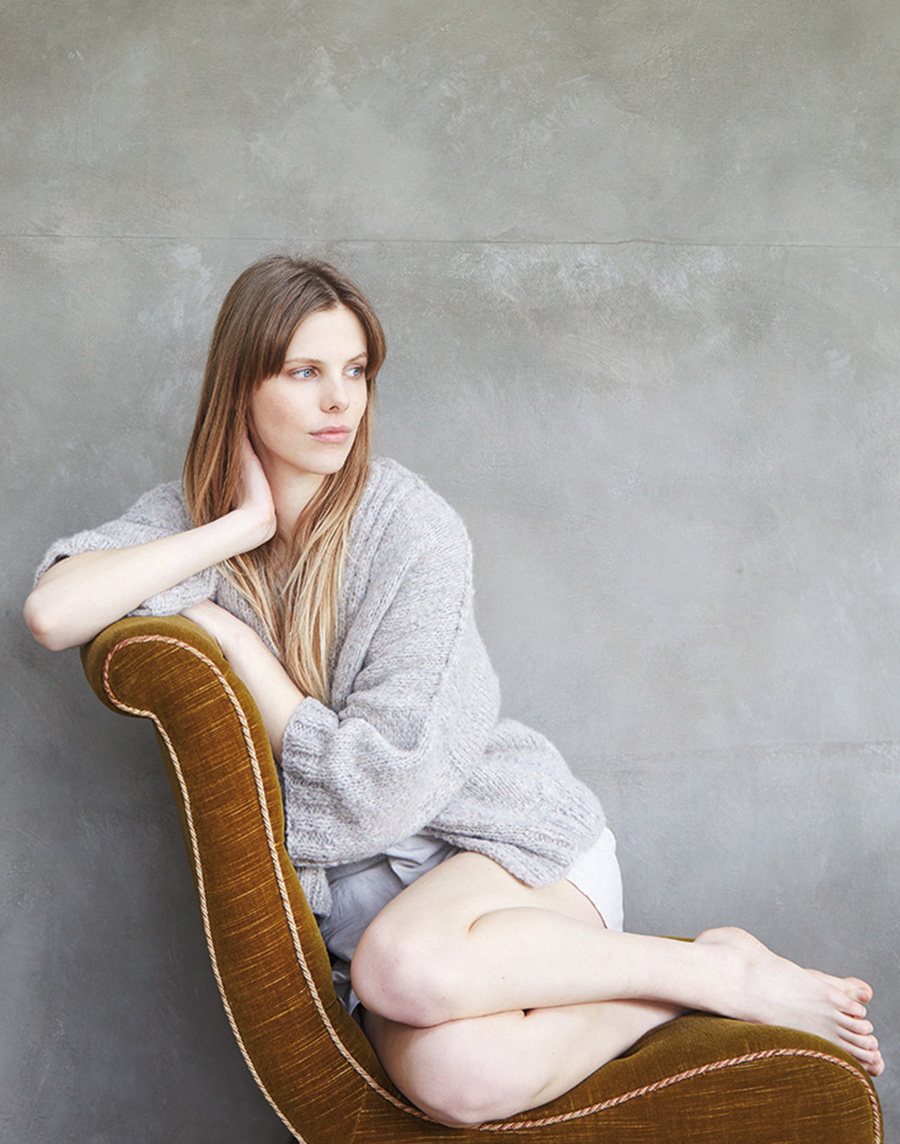DO YOU HAVE A FAVOURITE TEXTILE?
Any material that has been created by hand, that shows the handwriting of the maker and the patina of time and wear. I like to be able to see and touch a textile’s history, to know that it has lived and has a life story to tell. One of my favourite pieces is an embroidery made by my Mum, it is quite humble but it has great personality and I have it in a small frame because it is such a treasured item to me. I also recently re-discovered one of the first swatches of knitting that I ever did. I had obviously kept it at the time, and through many house moves and clear outs it has survived as a relic of my own craft journey, a seemingly inconsequential bit of randomly knit tweed, combined with black and ecru wool that is somehow imbued with meaning, and to hold it feels like a very authentic part of me.
WHERE DO YOU FIND YOUR INSPIRATION?
I can find inspiration in anything and everything; I think it’s just how I am wired. My mind is always buzzing with ideas, so the simplest thing can trigger it, but it always comes back to the landscape. The changing terrains of the city, country and coast cannot fail to inspire if you care to look. There is something very grounding in observing how the landscape changes and evolves. In nature nothing stays the same for very long, there is a constant state of flux. As people, we can often be apprehensive of change and the unknown, but I personally find it very stimulating and energising. At the moment I’m in my studio on the sea front, and I am enjoying looking out the window at the clouds as they move across the sky forming never repeated shapes, and then before you know it the day has dissolved into a pink and orange haze descending into the dark, grey blue of the sea as the moon rises. These observations often don’t directly translate into a design or even an idea, but taking the time to be present and to allow your mind to wander is crucial to creativity.
WHAT IS YOUR STARTING POINT?
Usually texture or fibre, and sometimes a shape or form, but always at night. Staying up late was a habit born out of necessity, to meet deadlines or correspond with colleagues in different time zones. But now I find that I still often prefer to work at night, with no distractions and just a sketchpad and a cup of tea. Something magic happens in that quiet night time which seems to expand beyond the hours, offering a freedom seldom found during the day when the dog needs to be walked, the phone needs to be answered and everyday life interrupts. I make reams of pages of drawings and it’s from these that, in the cold, more critical morning light, I can make selections and refine ideas.
HOW DO YOU FEEL WHEN YOU HAVE FINISHED A PROJECT?
Never satisfied, to the point where I never really feel as though I have finished a project; there is always an annoying feeling that I could have just tweaked something, improved a cast on, added a colour, or changed a neckline to make it better. Even when I look at published books I find it hard to put those ideas to one side as finished articles. Creativity is a process rather than an event, so I find design to be more of an evolution from previous ideas than a completely blank sheet of paper. In some ways its reassuring to know that you don’t have to invent something completely new but at the same time it can be frustrating, as the perfect design isn’t attainable. But there is always the delicious possibility posed by the next project, and it’s that potential that draws me into the next one.
IS THERE A DIFFERENCE IN THE WAY YOU DESIGN WHEN YOU ARE CREATING SOMETHING FOR YOURSELF AND FOR A DESIGN BREIF?
Essentially one’s style is inherent, you have a signature that comes through all your work, but if I only have to please myself then yes my designs are more extreme—bolder, more experimental, more intuitive. But as a designer, working to a brief there are other criteria to fill and you have to be mindful of these in order for a design to be successful, so ideas might be pared back, adapted and perhaps more understated in order to be commercial.
IS THE PATH ALWAYS SET WHEN YOU EMBARK ON MAKING SOMETHING OR DO THINGS CHANGE AS YOU GO ALONG?
My personal creative process is a complex one. I take a long time collecting things together, drawing, changing, procrastinating, and swatching with yarn on the needles and then probably back to drawing. It is a process of experimentation, reflection, alteration, adding, subtracting, refining, and its important that you stay flexible and allow the changes to happen. Even once you start knitting there may be reason to change things as you progress—a technique might not work, or the proportion of the piece may need to be altered or there may be a commercial reason to swap a colour or change a stitch. One of the things I love about hand knitting is that there really are no rules and anyone can do it, you have the power to be able to control the fabric, texture and form of a garment, and if something is not working, you can always rip it out and start again.
HOW MUCH DOES A YARN/FIBRE ALREADY DICTATE WHAT THE DESIGN WILL BE?
A yarn is most often the initial source for a design, especially if working to a brief. The fibre, texture, weight and twist of a yarn will all inform what the design can be and it is important to swatch and test the yarn to understand its properties before you begin. Some sheep breeds such as Bluefaced Leicester produce wool that is soft enough to be worn next to the skin, as well as being breathable and hypoallergenic, so suitable for baby clothing too, whilst other fibres such as linen are much coarser and more durable, so perfect for cushions and throws.
DO YOU HAVE ANY OTHER CREATIVE OUTLETS? ARE THERE ANY SIMILARITIES TO KNITTING?
I love architecture and all forms of product design. I think architects would make great knitters; the understanding of structure and space that they have could translate to the form of the body and how a garment fits it, and there is a lot of cross over in the engineering and maths required, as well as the aesthetic connection to materials used in buildings and the fibre used in knitting, and the different textures and shapes used to achieve varying effects. I would have loved to study architecture, but I do enjoy visiting buildings and exhibitions to appreciate them on an aesthetic level. I also love the natural structure of flowers and plants, especially dead and dried ones, where the colour becomes less important and it’s all about the shapes and intricate patterns (although I do also love the colour and fluidity of living ones too!). Walking in nature is a constant source of creative inspiration and I like finding hag stones along the path, shells on the beach and dried leaves and twigs scattered amongst the hedgerows and curling through fences by the railway track. I often bring these found objects back home with me as souvenirs. Some inform designs, are colour matched for a new shade of yarn, or become talismans in my studio.




